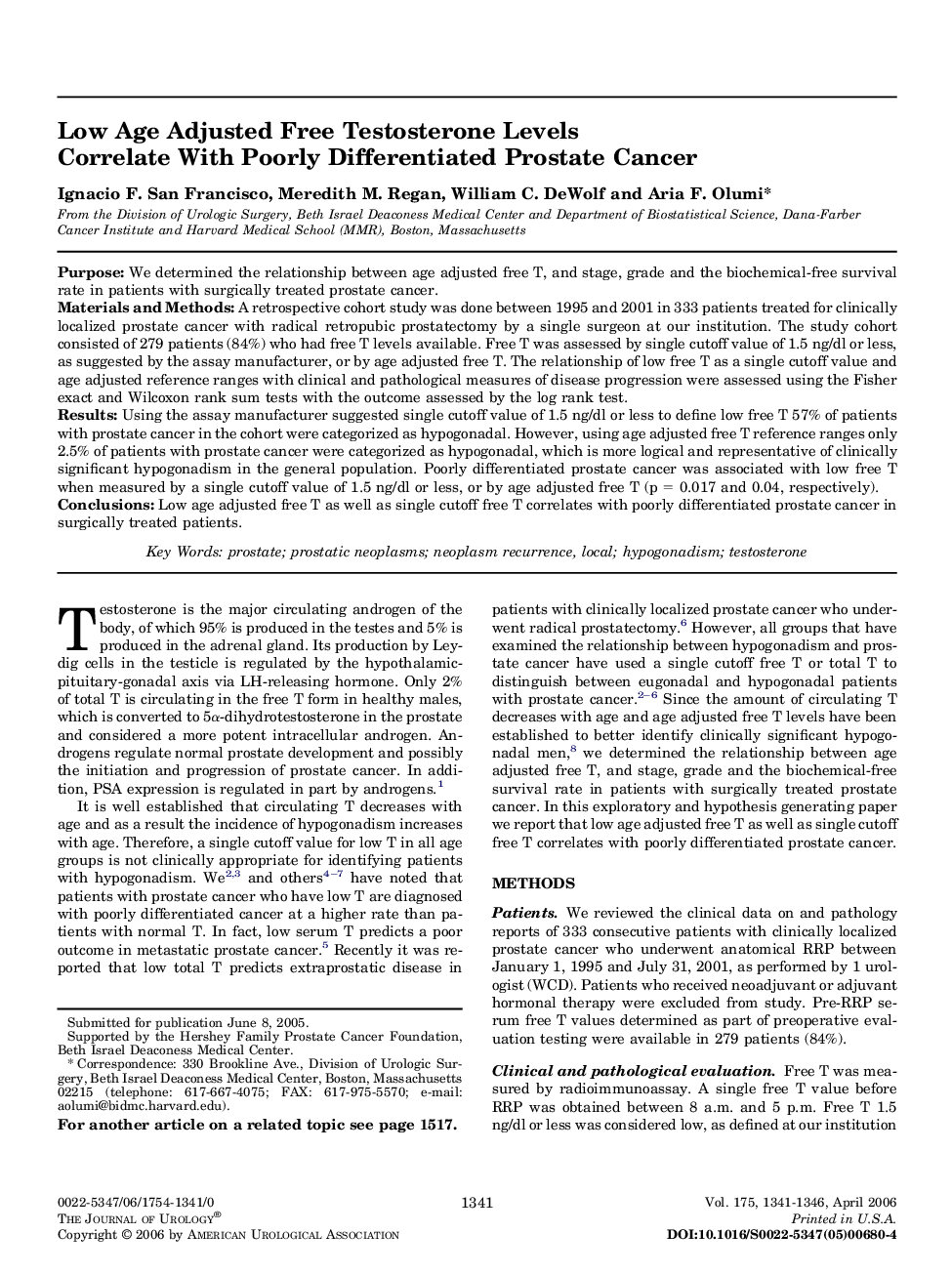| Article ID | Journal | Published Year | Pages | File Type |
|---|---|---|---|---|
| 3879764 | The Journal of Urology | 2006 | 6 Pages |
PurposeWe determined the relationship between age adjusted free T, and stage, grade and the biochemical-free survival rate in patients with surgically treated prostate cancer.Materials and MethodsA retrospective cohort study was done between 1995 and 2001 in 333 patients treated for clinically localized prostate cancer with radical retropubic prostatectomy by a single surgeon at our institution. The study cohort consisted of 279 patients (84%) who had free T levels available. Free T was assessed by single cutoff value of 1.5 ng/dl or less, as suggested by the assay manufacturer, or by age adjusted free T. The relationship of low free T as a single cutoff value and age adjusted reference ranges with clinical and pathological measures of disease progression were assessed using the Fisher exact and Wilcoxon rank sum tests with the outcome assessed by the log rank test.ResultsUsing the assay manufacturer suggested single cutoff value of 1.5 ng/dl or less to define low free T 57% of patients with prostate cancer in the cohort were categorized as hypogonadal. However, using age adjusted free T reference ranges only 2.5% of patients with prostate cancer were categorized as hypogonadal, which is more logical and representative of clinically significant hypogonadism in the general population. Poorly differentiated prostate cancer was associated with low free T when measured by a single cutoff value of 1.5 ng/dl or less, or by age adjusted free T (p = 0.017 and 0.04, respectively).ConclusionsLow age adjusted free T as well as single cutoff free T correlates with poorly differentiated prostate cancer in surgically treated patients.
